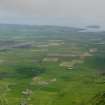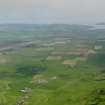Pricing Change
New pricing for orders of material from this site will come into place shortly. Charges for supply of digital images, digitisation on demand, prints and licensing will be altered.
Campbeltown, General
Burgh (Medieval), Town (17th Century)
Site Name Campbeltown, General
Classification Burgh (Medieval), Town (17th Century)
Canmore ID 70310
Site Number NR72SW 42
NGR NR 71987 20416
NGR Description Centred NR 71987 20416
Datum OSGB36 - NGR
Permalink http://canmore.org.uk/site/70310
- Council Argyll And Bute
- Parish Campbeltown
- Former Region Strathclyde
- Former District Argyll And Bute
- Former County Argyll
NR72SW 42 centred 71987 20416
Campbeltown (name: NR 72 20) was founded by Archibald, 7th Earl of Argyll, who erected the castle of Lochhead (NR72SW 15) upon a site now occupied by the Castlehill Church in or about 1609, and simultaneously began to promote the settlement of Lowland incomers on ground nearby.
In 1667 the place was erected into a burgh of barony and in 1700 it became a royal burgh. Little is known of the early development of the town and the oldest surviving plan dates only from about 1760.
RCAHMS 1971.
NR72SW 42 71987 20416
NMRS NOTES
Campbeltown, Parliament Place, Housing Estate.
Exact location uncertain at time of upgrade.
See collection page for photograph.
NMRS NOTES
Campbeltown, Knocknaha Mill.
Exact location uncertain at time of upgrade.
See collection page for photograph.
Photographic Survey (1959)
Photographs of buildings in Campbeltown, Argyll, by M R Apted in 1959.
Publication Account (1985)
The origins of Campbeltown lie in the early 17th century when Archibald Campbell, 7th Earl of Argyll, built a castle on one of the most prominent knolls round the natural harbour (now the site of the Castlehill Church); the attractions of this sheltered bay are clear, and extensive early prehistoric occupation, including mesolithic shell-middens and a series of bronze-age cists with rich gravegoods, has been recorded. The medieval focus was perhaps on the south side of Camp belt own Bay at Kilkerran (NR 728193), where a church dedicated to St Ciaran is recorded by the middle of the 13th century. Today in the Kilkerran Cemetery may be seen an Early Christian cross, a fine cross shaft of 15th century date, as well as a wide variety of later headstones, the carvings on which reflect the maritime and commercial interests of the later town. The Earl encouraged settlement by Lowlanders in order to stimulate trade and agriculture. In 1700 the town was created a royal burgh, a status it retained until local government reorganisation in 1975. The bustle of Campbeltown today is mainly the result of its growth in the middle of the last century. A view of Main Street on Fair Day dating to 1886 gives an impression of the town at this time. Castlehill Church built between 1778 and 1780 is seen in the background occupying the site of the Earl's castle. The Town House with its elegant octagonal steeple forms the main architectural focus for the painting, with the cross (no. 36) at the centre of the throng. The Town House was built between 1758 and 1760, on the site of an earlier tolbooth, and is one of the most attractive of early buildings representing civic pride in Argyll. The stone spire is about twenty years later than the original building, replacing one in timber. The building that houses the Library and Museum at the middle of Hall Street is of interest not only because of the unusual range of archaeological material on display, but also because of the carved panels on the exterior; there are four panels which illustrate the eight trades that were of particular importance to Campbeltown in past years: coal-mining, fishing, boat-building, flax, learning, distilling and cooperage, and building. One of the unexpected architectural delights of Campbeltown is the Picture House, adjacent to the Museum; known as the Wee Picture House, it was opened in 1913 and is said to be one of the oldest in Scotland. The fairy-tale facade creates an appropriate image for the beginnings of this new medium. The terminal loop of the Campbeltown to Machrihanish Light Railway Company was formerly at the centre of Hall Street opposite the cinema and Library, with the loading terminus on the New Quay; the main depot with carriage and engine-shed was at Limecraigs. From its foundation Campbeltown had both English and Gaelic speaking communities and this is reflected in the number of churches. The Lowland or English speaking community worshipped between 1706 and about 1778 at the old Lowland Church in Kirk Street (NR 720203), now a hall; at that time the Castlehill Church shown above was built. The Highland Parish church, built between 1803 and 1806 for the Gaelic-speaking congregation was both a well-proportioned facade and spacious interior; the steeple is not part of the original design but dates from a rebuilding in 1884-5.
Information from ‘Exploring Scotland’s Heritage: Argyll and the Western Isles’, (1985).












































































































